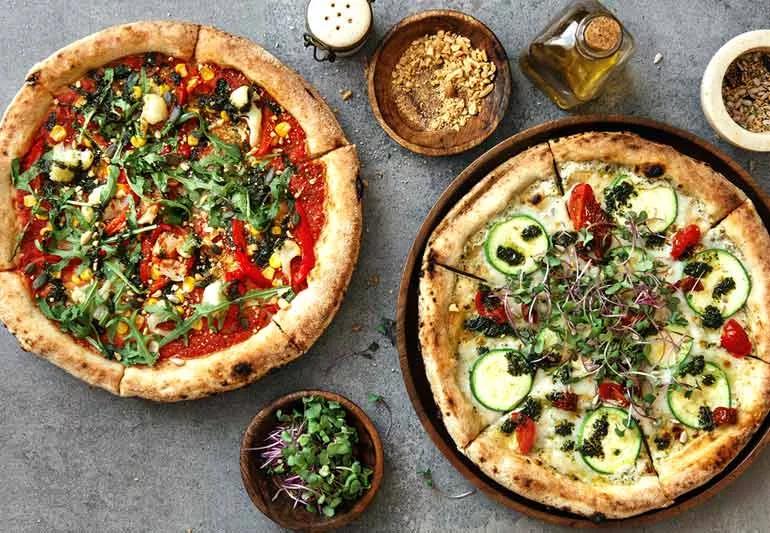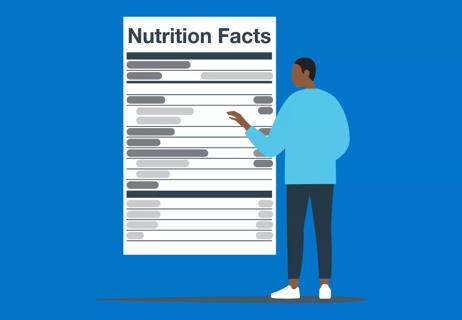Advertisement
For starters, try whole-grain crust, load up on colorful veggies and avoid high-sodium meats

Sometimes, nothing hits the spot quite like a pizza. And we’re with you. When it comes to an easy, tasty, affordable and versatile meal, pizza gets high marks.
Advertisement
Cleveland Clinic is a non-profit academic medical center. Advertising on our site helps support our mission. We do not endorse non-Cleveland Clinic products or services. Policy
But if the pie you love most is topped with cheese an inch thick and covered crust-to-crust with pepperoni and sausage, you might think about ways to sneak some better nutrition into your favorite deep dish.
They say the devil’s in the details. Pile a high-carb crust with high-sodium toppings, and you’re not doing your heart any favors. Choose whole-grains, healthy fats and vitamin-rich toppings, and now we’re talking.
Preventive cardiology dietitians Julia Zumpano, RD, LD, and Fawziah Saleh, RDN, LD, share five helpful strategies for making tasty heart-healthy pizza at home, along with their tips for ordering better-for-you takeout.
“Pizza is a staple in a lot of households,” Zumpano notes. “It can get a bad reputation as an ‘unhealthy’ food, but the great thing is that pizza can be modified easily to be better for your heart and still very satisfying.”
Give your pizza a whole-grain foundation to up your intake of healthy fiber. Keep carbs low by choosing (or making) a thin crust. Read the ingredients on store-bought crusts, and avoid any with hydrogenated oils.
Try these healthy crust options:
Heart-healthy sauces can be a good source of monounsaturated fats and vitamins. Avoid cream-based sauces like Alfredo or white sauce, and opt out of barbecue sauce, which is high in added sugar and sodium.
Advertisement
If you’re a traditionalist, opt for a fresh tomato sauce or choose a no-salt-added canned tomato sauce. These choices are high in fiber, vitamins C and K, potassium and manganese.
A light layer of olive oil is a heart-healthy monounsaturated fat. Adding some crushed garlic can bring the flavor up a notch and give you a boost with its antioxidant-like properties that help keep your blood vessels flexible to manage blood pressure and prevent atherosclerosis (hardening of the arteries).
Green up your pizza with pesto, which is full of heart-healthy monounsaturated fats, too. Pesto is a blend of basil, garlic, pine nuts, parmesan cheese, pepper and olive oil. Try it and you may find yourself saying that pesto is the besto!
Mix up the heart-healthy ingredients for a yummy sofrito sauce. Lightly sauté onions and garlic in olive oil and add fresh chopped tomatoes or pesto.
All cheese contains saturated fat and sodium, so tread lightly. Whenever possible, select natural cheeses (such as feta, fresh mozzarella or ricotta) or cheeses low in fat and sodium.
Try these cheeses to amp up the calcium and vitamin D:
Alternatively, consider trying cheese-less pizza. You could try dairy-free cheese, or no cheese at all, and top it with nutritional yeast.
This is where it gets really fun! Veggies and fruits will contribute more nutrients than any other ingredients for your pizza, and they’ll liven up the flavors and add some color to your pie.
Some favorites:
Of course, a veggie-packed pizza can fill up your belly with vitamin-rich foods. But if you’re looking for some protein, choose wisely. Processed meats like pepperoni, sausage and ham are high in sodium, saturated fats and nitrates.
“The No. 1 best way to boost the nutritional value of your pizza is by cutting out processed meats, which are high in calories and unhealthy fats,” Zumpano says.
Try these proteins instead:
Advertisement
If delivery is on the menu tonight, Zumpano and Saleh suggest these tips to boost the nutritional value of your take-out pizza:
“Most pizza shops offer a variety of choices for crusts and toppings that can help keep your pizza healthy and still delicious,” Saleh says. “Don’t be afraid to ask!”
Advertisement
Learn more about our editorial process.
Advertisement

A variety of healthy foods can help reduce inflammation and keep other conditions at bay

Information on serving size, calories and nutrients can help you make healthy choices

Obesity, age and preexisting heart conditions can all raise your risk of cardiovascular disease during pregnancy

The general rule is 0.8 to 1 gram of protein per kilogram of body weight — but that may not be right for you, and it’s important to determine what’s right for you

Adding salt to your water isn’t going to have measurable benefits — but there may be plenty of downsides

Pickles are low in fat and calories and rich in some vitamins and minerals, but they’re usually high in sodium

Walking is a great goal, but how many steps are best for you depends on factors like your fitness level and age

Learning about your relationship with food can help improve your eating behaviors and patterns

Focus on your body’s metabolic set point by eating healthy foods, making exercise a part of your routine and reducing stress

PFAS chemicals may make life easier — but they aren’t always so easy on the human body

While there’s little risk in trying this hair care treatment, there isn’t much science to back up the claims